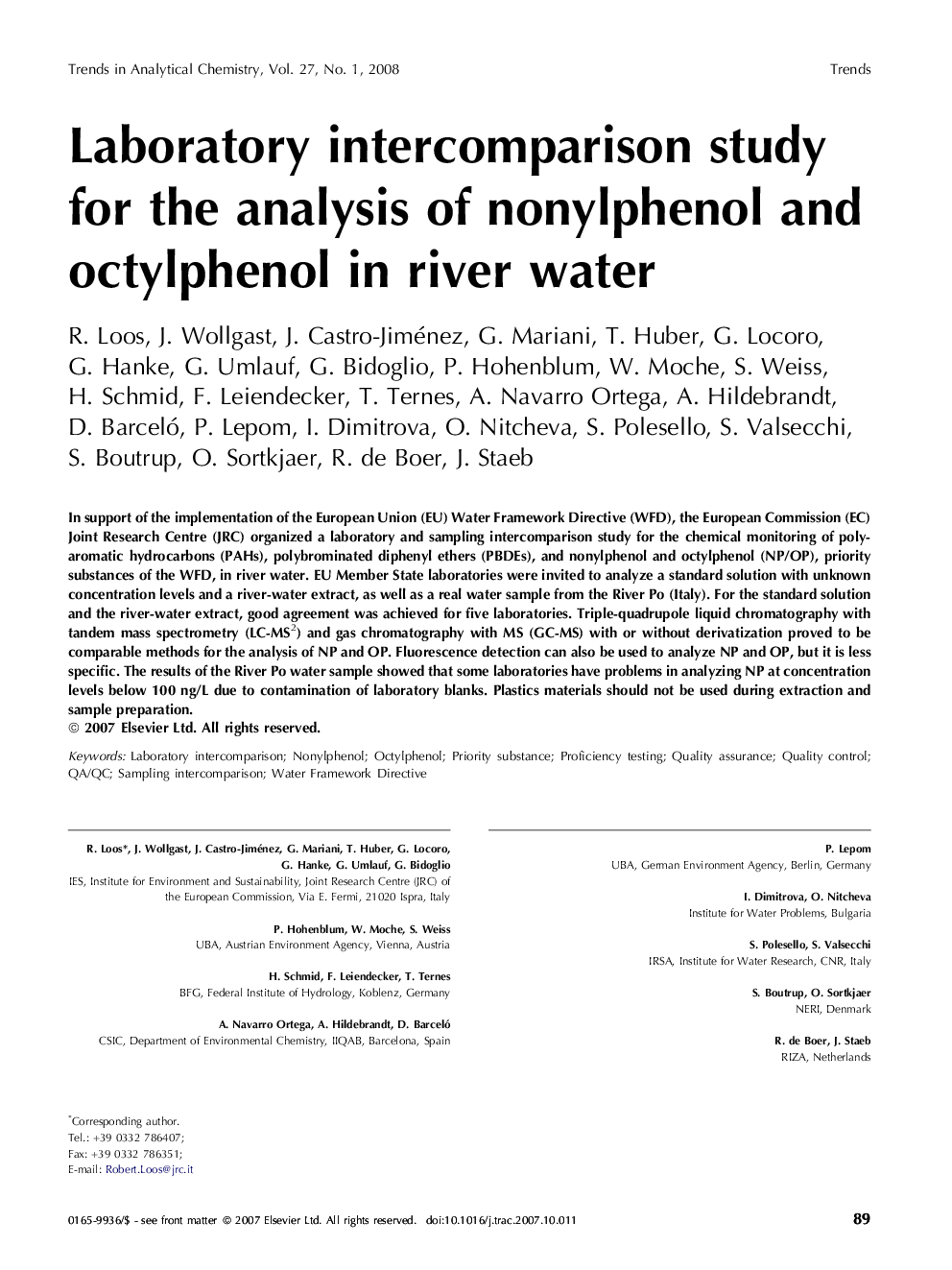| Article ID | Journal | Published Year | Pages | File Type |
|---|---|---|---|---|
| 1248516 | TrAC Trends in Analytical Chemistry | 2008 | 7 Pages |
In support of the implementation of the European Union (EU) Water Framework Directive (WFD), the European Commission (EC) Joint Research Centre (JRC) organized a laboratory and sampling intercomparison study for the chemical monitoring of polyaromatic hydrocarbons (PAHs), polybrominated diphenyl ethers (PBDEs), and nonylphenol and octylphenol (NP/OP), priority substances of the WFD, in river water. EU Member State laboratories were invited to analyze a standard solution with unknown concentration levels and a river-water extract, as well as a real water sample from the River Po (Italy). For the standard solution and the river-water extract, good agreement was achieved for five laboratories. Triple-quadrupole liquid chromatography with tandem mass spectrometry (LC-MS2) and gas chromatography with MS (GC-MS) with or without derivatization proved to be comparable methods for the analysis of NP and OP. Fluorescence detection can also be used to analyze NP and OP, but it is less specific. The results of the River Po water sample showed that some laboratories have problems in analyzing NP at concentration levels below 100 ng/L due to contamination of laboratory blanks. Plastics materials should not be used during extraction and sample preparation.
